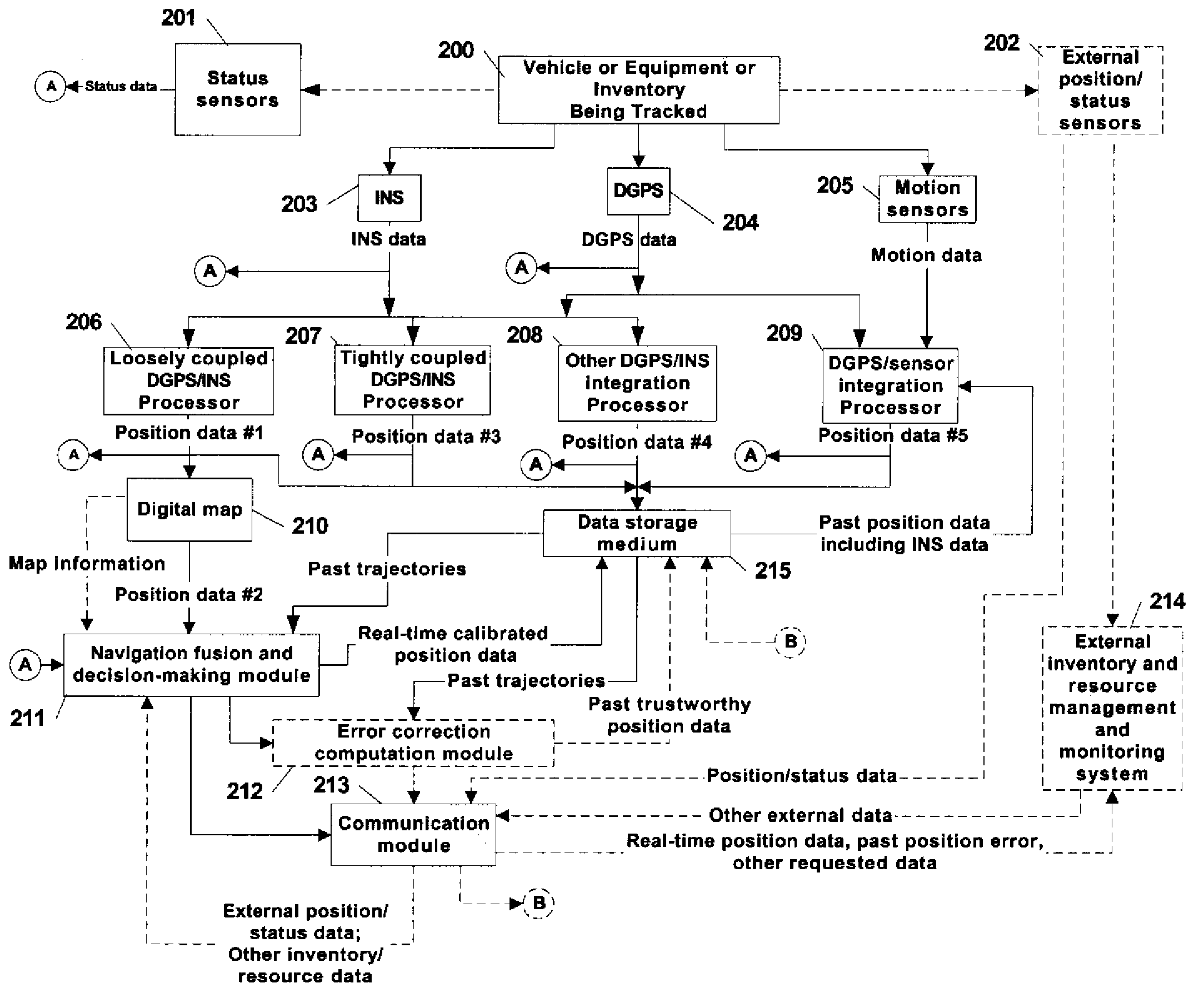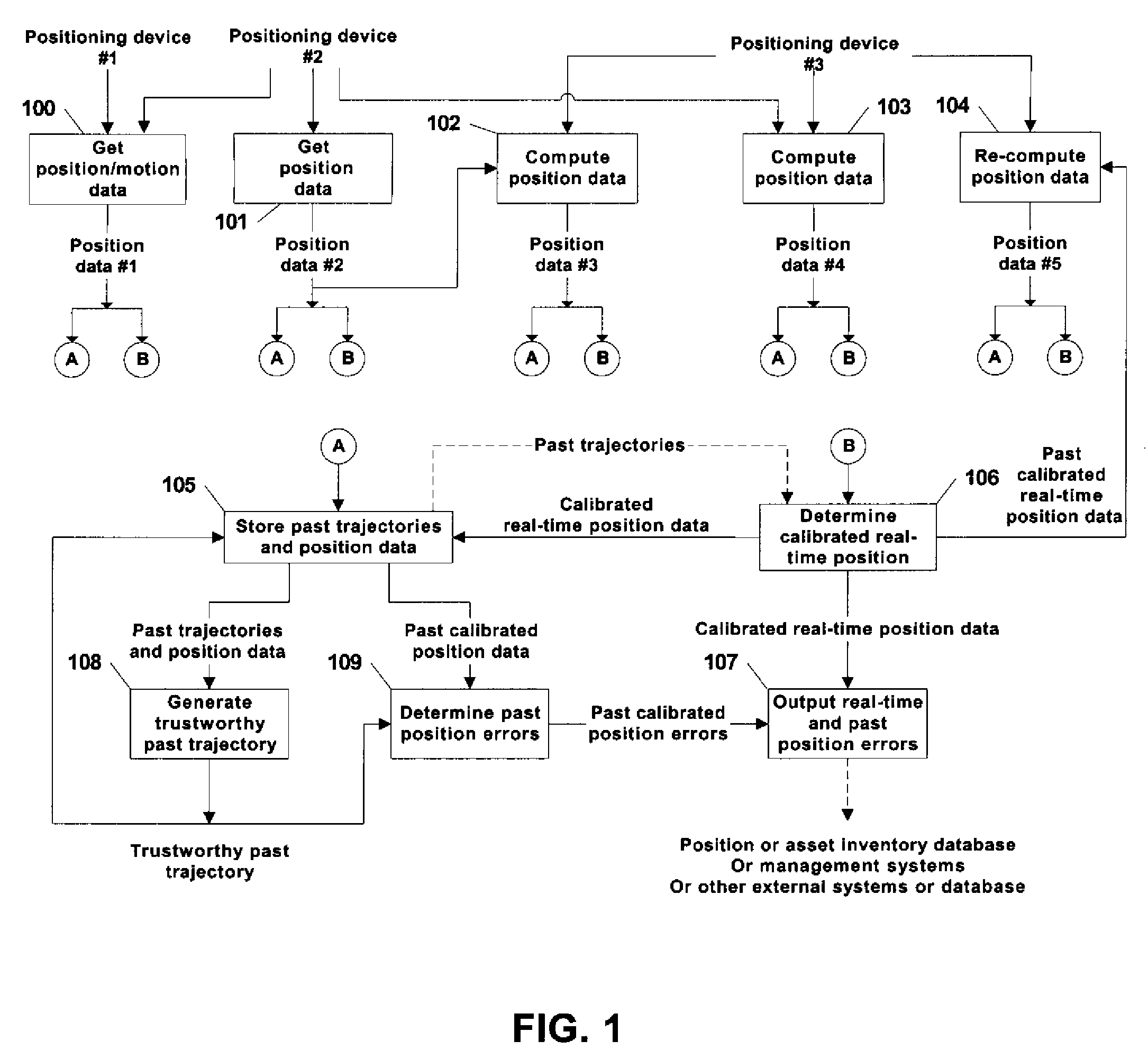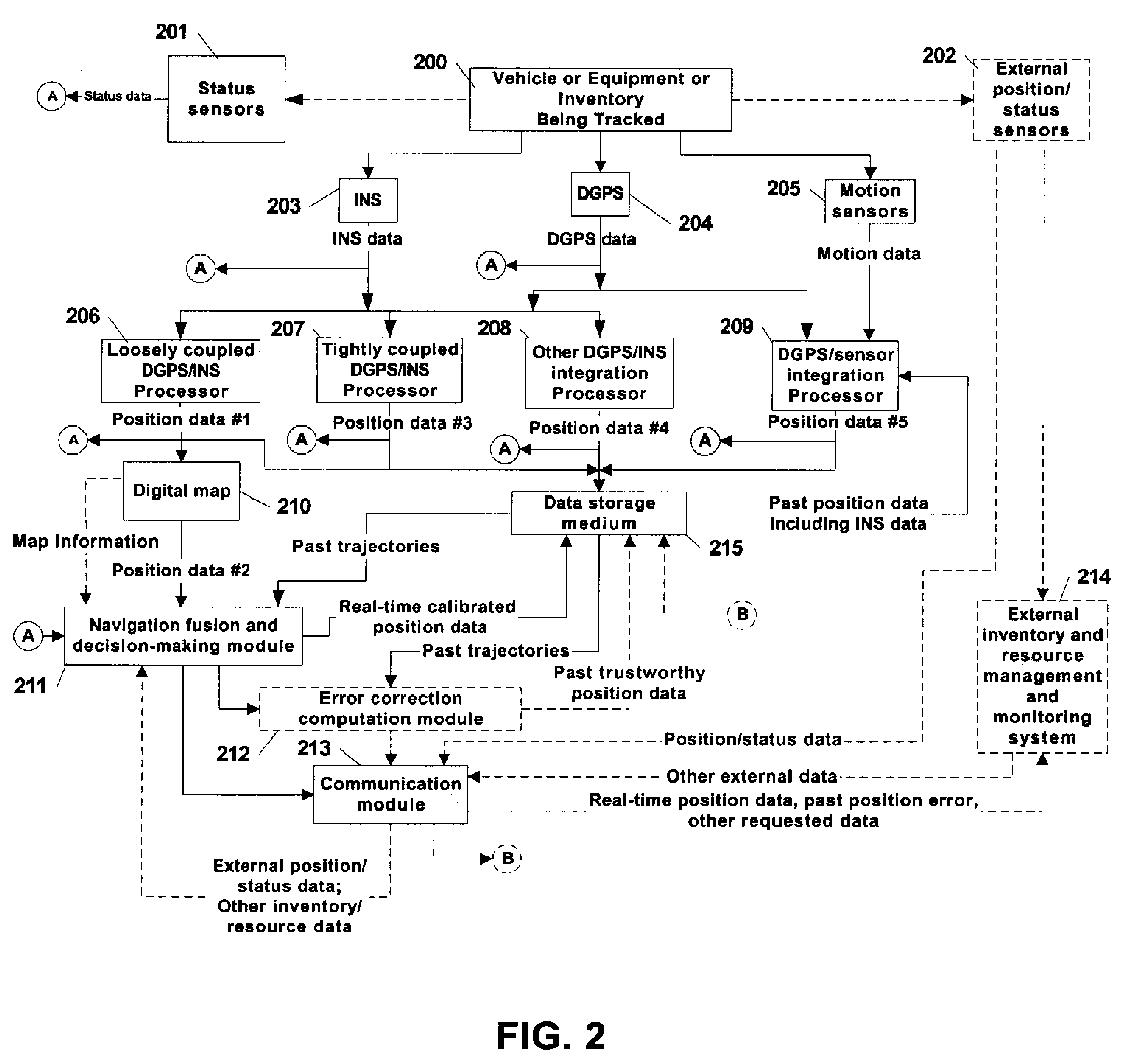Automated asset positioning for location and inventory tracking using multiple positioning techniques
a technology of asset positioning and positioning technique, applied in direction finders using radio waves, instruments, data processing applications, etc., can solve the problems of radio-wave positioning, inherited noise, and inability to achieve 100% reliability or accuracy of real-time positioning systems, so as to accurately locate inventory, correct noise or errors, and high accuracy of positioning systems
- Summary
- Abstract
- Description
- Claims
- Application Information
AI Technical Summary
Benefits of technology
Problems solved by technology
Method used
Image
Examples
Embodiment Construction
[0023]FIG. 1 is a flowchart illustrating basic operation of a method for integrating real-time positions and correcting past trajectory of a mobile object using multiple positioning techniques. Initially in FIG. 1, real-time position data is computed in step 100, step 101, step 102 and step 103 from positioning devices #1, positioning devices #2 and positioning devices #3. For example, a first embodiment may select an INS system for positioning devices #1, a DGPS system for positioning devices #2, and motion sensors for positioning devices #3. A second embodiment may choose a different set of positioning devices, such as an integrated DGPS / INS system for positioning devices #1, a DGPS system with RTK correction for positioning devices #2, and RTLS (Real-Time Locating System) for positioning system #3. The positioning devices #1, #2 and #3 can be complementary and / or redundant. It is understood that an individual embodiment may have different numbers of positioning devices as well as...
PUM
 Login to View More
Login to View More Abstract
Description
Claims
Application Information
 Login to View More
Login to View More - R&D
- Intellectual Property
- Life Sciences
- Materials
- Tech Scout
- Unparalleled Data Quality
- Higher Quality Content
- 60% Fewer Hallucinations
Browse by: Latest US Patents, China's latest patents, Technical Efficacy Thesaurus, Application Domain, Technology Topic, Popular Technical Reports.
© 2025 PatSnap. All rights reserved.Legal|Privacy policy|Modern Slavery Act Transparency Statement|Sitemap|About US| Contact US: help@patsnap.com



